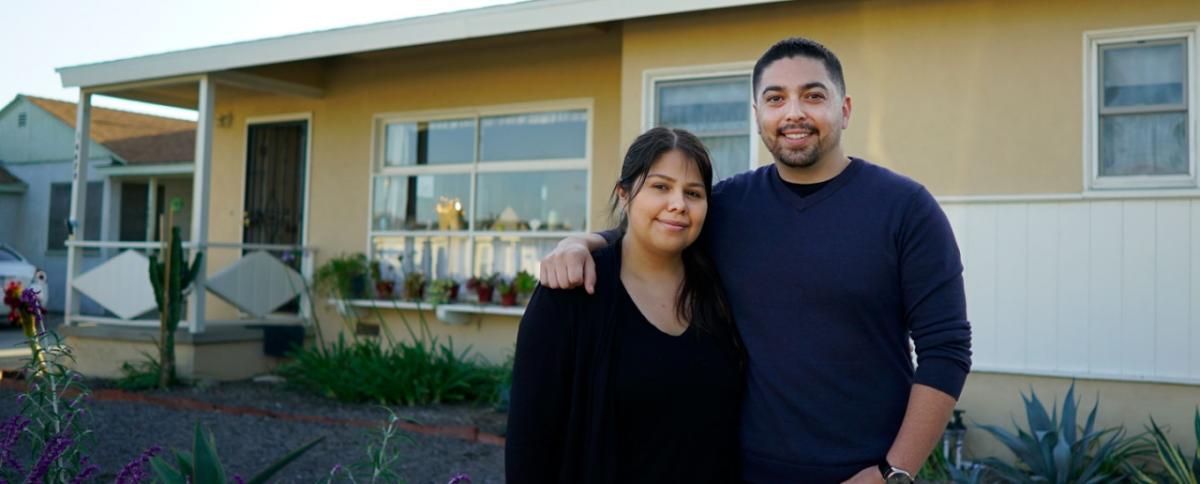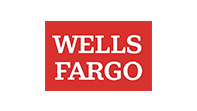There’s No Place Like the Home Next Door
When they were kids, siblings Kenneth and Leah Martinez loved their elderly next-door neighbors like extended family. Years later, they are now the proud owners of the house next door, with help from Wells Fargo’s NeighborhoodLIFT® program.

There’s no place like the home next door
In his teen years, Kenneth Martinez would often drive home after school, pull into his driveway, and see a familiar sight next door: His elderly neighbor, sitting in the shade of an old tree, waving at him.
He’d usually chat with the kindly gentleman, talk about their suburban Los Angeles neighborhood, and share a few laughs. The neighbor and his always-friendly wife were like extended family, and Martinez and his dad often helped them with their household needs.
Today, the couple’s old home is full of new electrical outlets, fire detectors, and other repairs or upgrades — courtesy of Martinez and his father.
Earlier this year, when the neighbor’s widow and daughter offered to sell the house to Martinez and his sister, Leah, they jumped at the opportunity to become first-time homeowners.
“The main reason my sister and I felt so comfortable getting that house is we knew it had been so well maintained,” said Martinez, 29, now a welder at an aerospace plant. “My dad actually did most of the work. I just helped. We’re a close family, and I always knew I wanted to live near my folks. I guess you can’t get closer than this. We’re next-door neighbors now.”
For the millennial Martinez siblings, the avenue to buying a home came through NeighborhoodLIFT® — a down payment assistance and homeowner education program led by Wells Fargo, NeighborWorks® America, and Neighborhood Housing Services of Los Angeles County. Geared toward low- and moderate-income buyers, Wells Fargo’s largest philanthropic effort has created more than 21,000 homeowners nationwide since 2012, pouring more than $460 million into sustainable homeownership and neighborhood revitalization in 70 markets across the U.S., including Sacramento last month.
Wells Fargo launched its very first LIFT program seven years ago in Los Angeles, creating nearly 390 homeowners through a $15 million initiative and down payment grants of about $30,000 each, according to company data. Wells Fargo returned to Los Angeles earlier this year with another LIFT program — a $9.8 million effort aimed at creating several hundred more homeowners.
That’s when the Martinez siblings found out about the program from their Wells Fargo banker. Since their teen years, they had worked hard and saved money toward buying a home, but neither could find an affordable one in the ultra-high-cost LA housing market. Although LIFT recipients can work with any participating lender, the siblings chose Wells Fargo as long-time customers of the bank.
“Qualifying for a NeighborhoodLIFT grant gave us the piece of the puzzle we needed,” said Leah Martinez, a restaurant manager in the LA area. “That grant really did lift us up to fulfill our dream.”
LIFT programs have been especially valuable for homebuyers in costly housing markets like LA and other major California cities, said Kim Smith-Moore, Wells Fargo’s national LIFT programs manager. Since 2012, more than 2,500 homeowners across the state have benefited from the down payment help and homebuyer education courses, she said.
It has really been a dream-maker for so many hard-working families,” she said. “You can feel their heartfelt appreciation when they talk about achieving something most never believed would happen. That certainly motivates us at Wells Fargo to take LIFT forward to reach as many people as possible.”
In recent years, as Wells Fargo has worked to rebuild trust in the communities it serves, the company has renewed and expanded its commitment to LIFT in Los Angeles and other major U.S. markets, said David Galasso, Greater California lead region president for Wells Fargo.
“We know this is ground zero in many ways for the affordability challenges that people face in today’s housing market,” he said. “We want to play as significant a role as possible in helping them clear the hurdles that separate them from affordable and sustainable homeownership.”
‘So many families counting on us’
When he met the Martinez siblings, Wells Fargo Home Mortgage Consultant Abel Ayala said he couldn’t have found a better fit for the LIFT program. Focused and highly motivated, they had all the building blocks to become homeowners — good credit, good spending habits, disciplined savings, a solid down payment, and realistic expectations, Ayala said.
“You have to tip your hat to these young people,” he said. “They did their homework, they managed their money well, and they did all the necessary preparation to be ready when their opportunity came. I just gave them the information and tools to help them take advantage of the opportunity. They listened and learned. That’s how you get happy endings like this.”
The Los Angeles market is in dire need of more happy endings for homebuyers, said Lori Gay, CEO of Neighborhood Housing Services of Los Angeles County, which teams with Wells Fargo and NeighborWorks on the LIFT programs. Many working families, especially those of color, have been priced out of the market as the homeownership rate has fallen below 35%, she said.
“I’ve been at this (affordable homeownership work) for a long time, and I really feel ashamed that the neighborhoods I serve throughout the region still look so tough in many places,” Gay said. “We still have people really struggling. Wages have not kept up with economic growth. People are struggling every day to make ends meet. And we know that homeownership can provide a way out of that.”
Programs like NeighborhoodLIFT can help bridge the gap for many families to help them turn their lives around, she said.
“I’m so grateful for the LIFT partnership and that Wells Fargo is back and still doing it,” Gay added. “So now this is yet another opportunity to help our region, and I want it to count. We have so many families who are counting on us. We just need more financial institutions, more corporate citizens, to step up and figure out ways to partner together to help lift everyone up.”

